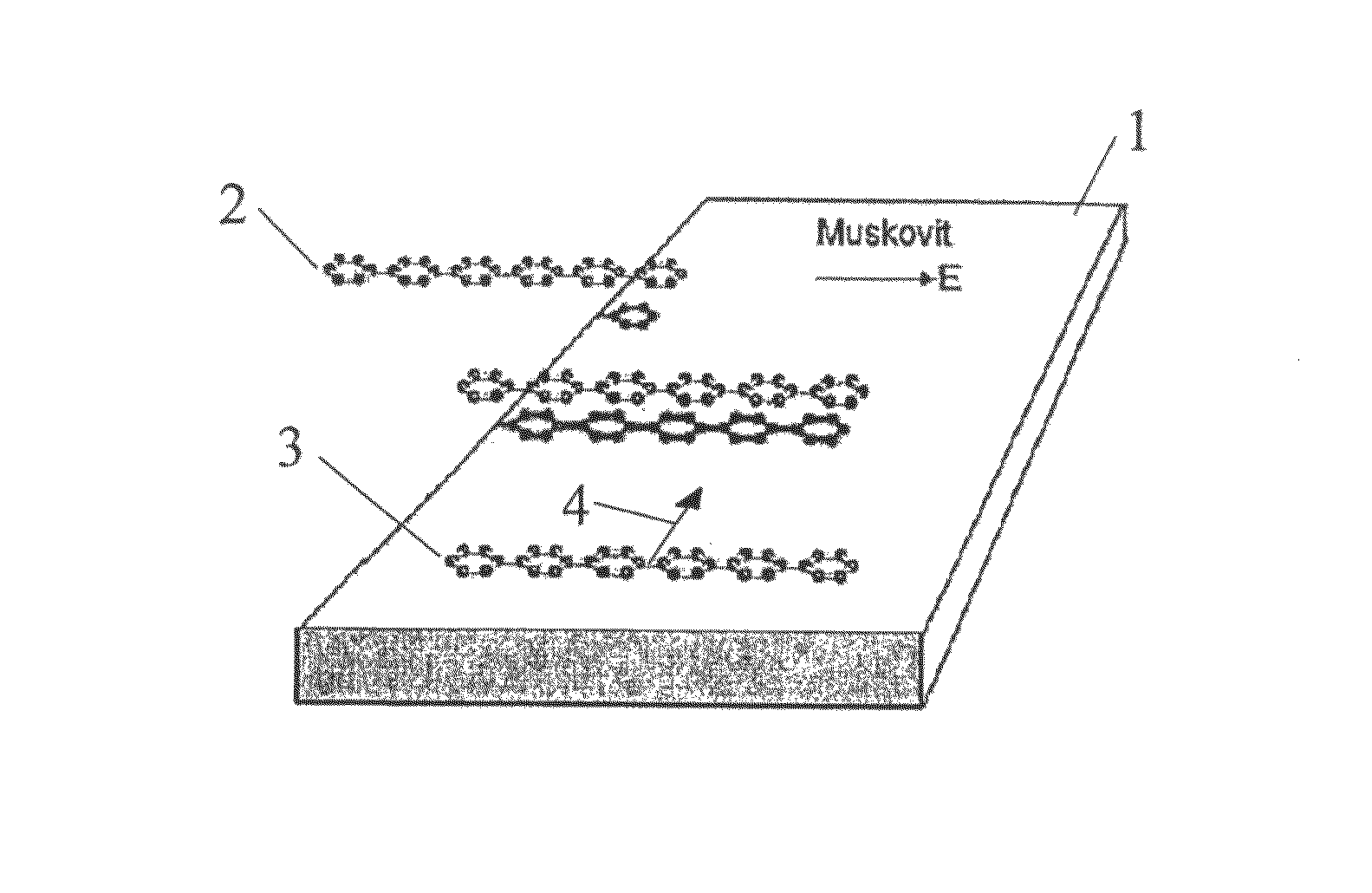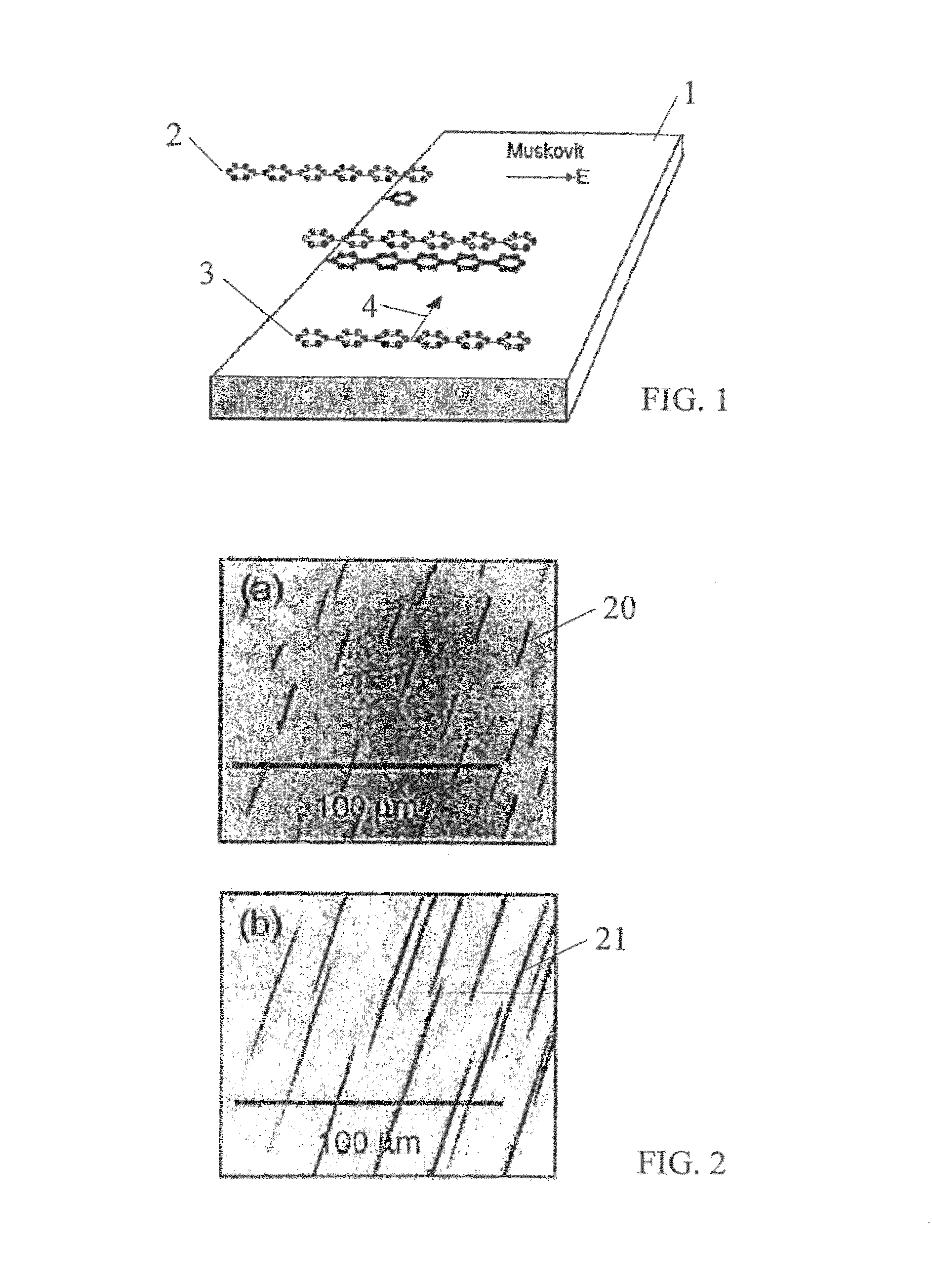Soft-lift off of organic nanofibers
a nanofiber and soft-lifting technology, applied in the field of organic nanofibers, can solve the problems of inconvenient or economically unfavorable formation of organic sub-micro- or nano-scale optically active elements, excessive waste of materials, and may simply not work, and achieve the effects of facilitating wafer-size production, simple and convenient large-scale production, and simple structur
- Summary
- Abstract
- Description
- Claims
- Application Information
AI Technical Summary
Benefits of technology
Problems solved by technology
Method used
Image
Examples
Embodiment Construction
[0065]FIG. 1 illustrates schematically the growth of organic nanofibres 2, 3 on a template substrate 1, or more specifically, the growth of phenylene nanofibres on a muscovite mica substrate.
[0066]Mica may be prepared so that an electric field is present in the surface, e.g. by cleavage in air and immediate transfer into a vacuum apparatus where it may be outgassed, e.g. at 410 K for 5 h.
[0067]The nanofibres presented in this section are made up of p-phenylene oligomers (p-nP) which are elongate molecules made of n benzene rings. It is however to be understood that any type of molecules within the scope of the present invention may be used. These molecules may grow in a self-organising way into organic nanofibres, the molecules grow in a direction perpendicular to the molecular axis, i.e. the molecules grow in a direction parallel to the surface plane, as indicated by the arrow marked with reference numeral 4. The fibres may be provided with a length of up to a few millimetres with ...
PUM
 Login to View More
Login to View More Abstract
Description
Claims
Application Information
 Login to View More
Login to View More - R&D
- Intellectual Property
- Life Sciences
- Materials
- Tech Scout
- Unparalleled Data Quality
- Higher Quality Content
- 60% Fewer Hallucinations
Browse by: Latest US Patents, China's latest patents, Technical Efficacy Thesaurus, Application Domain, Technology Topic, Popular Technical Reports.
© 2025 PatSnap. All rights reserved.Legal|Privacy policy|Modern Slavery Act Transparency Statement|Sitemap|About US| Contact US: help@patsnap.com



